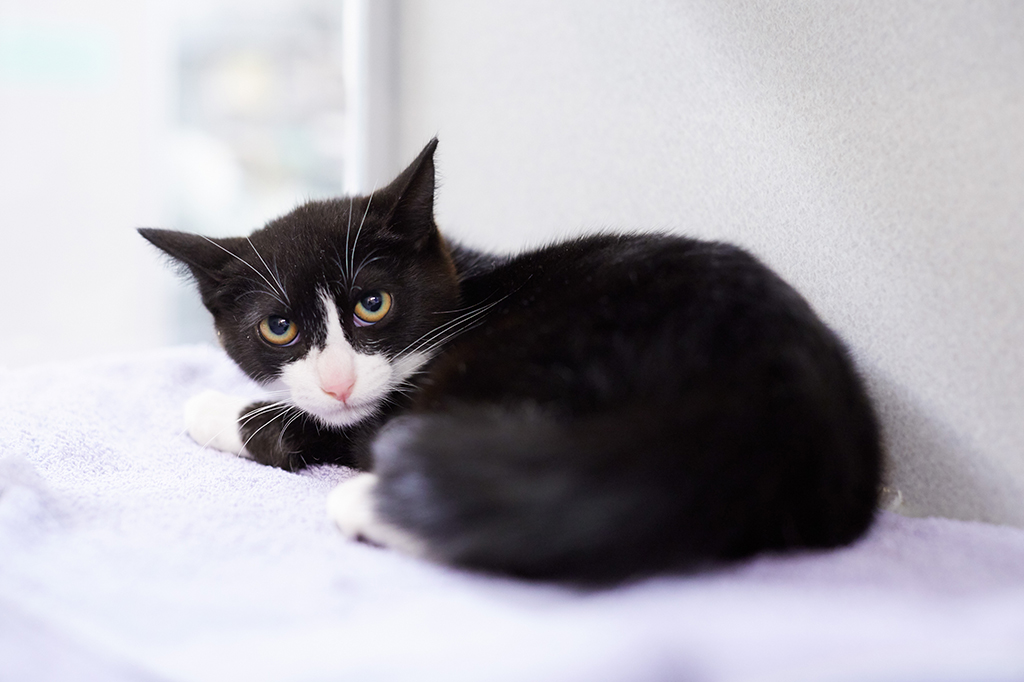How to Read Your Cat’s Body Language
December 9, 2022
Cats are a mystery. They need attention, but not too much. Cats enjoy playing but also like their space. These curious creatures send mixed messages, making it hard to read your cat’s mood. The good news is that there are clear signs on how to interpret your cat’s body language, all of which could provide insight into how your cat is feeling.
Read on to learn more about how to read your cat’s body language so you can understand them better.
Puffed Tail and Arched Back
Cats may puff up their fur while simultaneously flinging their tails straight up in the air when meeting a new cat or if they are confronted with a potentially dangerous circumstance. Cats puffing their tails, which can also be accompanied by an arched back, shows that they are scared or prepared to fight if need be.
Stiff Upwards Tail and Ears Forward
When your cat spots you from across a room, you may notice they’ll throw their tail up in the air and begin to trot over. Ears forward and a tail straight up means that your kitty is excited to see you! Occasionally, if your cat is really excited, their tail may twitch to show how much they love you.
Sniffing
Noticing your cat sniffing around is a sign that your pet is getting acquainted with their surroundings. Cats are very attuned to their sense of smell. Scents help them decipher if you have been in contact with another cat or dog, or even if you’re sick. Sniffing is information for cats; they’re gaining insight about potential prey, dangers, and general surroundings, so letting a cat smell you upon meeting is the best way to say “Hello!”. Occasionally, you may see your cat sniff something and then open their mouth; Don’t be alarmed! Cats have smell receptors on the roof of their mouth, so an open mouth after smelling is normal.
Ears Back and Tail Whipping
Your cat may pin its ears back for a number of different reasons. They could be scared, annoyed, or maybe they just heard a loud noise behind them. An important physical response to look out for in your cat is a whipping tail combined with ears back. This is a sign that your cat is angry. If this frustration is directed at you, give your kitty some space to show that you respect their boundaries.
Kneading
Cats will repeatedly squeeze their paws into small fists to signify great delight, a behavior known as "making biscuits." This was the strategy they employed as kittens to boost milk flow from their moms when breastfeeding. Kneading is calming and comforting for cats. As a cat owner, you can read this body language as a sign that they are preparing to relax or even getting ready for a nap.
Slow and Steady Blinks
Unfortunately, your cat's eyes aren't quite the windows into their souls. The rest of their physique communicates far more effectively. However, if you see a calm, steady look with occasional blinks, it implies your cat is relaxed and feels like they can really trust you.
Purring
Purring is frequently connected with complete pleasure (which it is!), but it is also a way of self-soothing. A sluggish or reclusive cat that purrs on a regular basis might be in discomfort. Purring can also release endorphins to reduce pain and stress, or it may be a way of communicating. Pay attention to the rate at which your cat purrs and note if it changes. Also note that purring that turns into yowling is probably a sign that something is wrong.
Find the Best Pet Products at Multipet
Multipet was established in 1995 as a leader in award-winning pet products. We are proud to provide distinctive design, great quality, and exceptional products to the international world of cats and dogs.
For almost two decades, pet owners have welcomed the Multipet brand into their homes. Customers from all around the world buy our items because they see a need for one-of-a-kind cat and dog toys, such as Shari Lewis' iconic and adored Lamb Chop® and our renowned Loofa Cat®.
For additional information or to receive a wholesale quote, please get in touch with us today!
